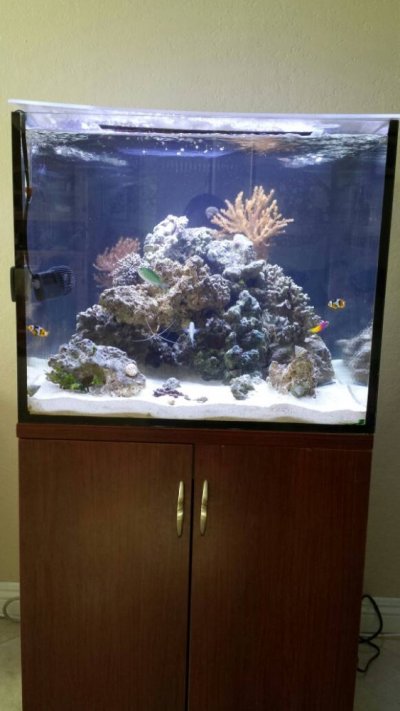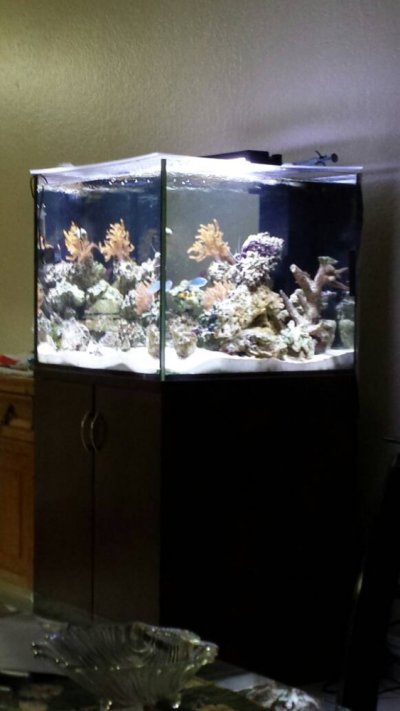Both the straight blue and white, and the multicolored units grow and color up corals just fine. No, corals don't even use the reds and greens. They are completely unnecessary.
Corals are photosynthetic like plants, but use an entirely different part of the spectrum.
Let me try to explain what I saw happen in the last few years:
LEDs were introduced, then after experimenting with different wattage the strong fixtures appeared. Folks immediately went out and bought them and put away their metal halides and T5's and cranked up these LED fixtures and they had all sorts of trouble. Bleaching, melting away, you name it.
Many folks went back to their old lighting, but some of them (myself included) hung on to the LEDs and kept experimenting. Just around the time we figured out really how potent these fixtures were (it's quite common to see fixtures that are dimmable now, and rare to see them not adjustable. This wasn't always the case) They came out with the multicolored units. I believe this was a sales tactic more than anything. LED fixture sales slowed, and they needed something to breathe new life into them.
Without a shred of research, people hopped on forums and started telling folks that you NEED the reds and greens, and even adopted a nick name for the violet colored LED- the "UV".
Like I said, at this point we were figuring out how strong they were and now the folks buying the multicolored units started having a little more success.
Meanwhile, all the while I and many others were growing coral under the blues and whites.
Now as you see, the multicolored units are more expensive. I don't see why...they take about the same money to build. You also see them more common than the blue and white models----because that's what the consumer thinks he wants.
I use the straight blue and white units today. I know folks who like the extra colors better. It's simply for aesthetics.


